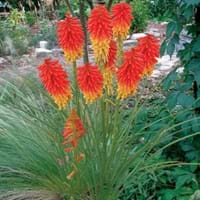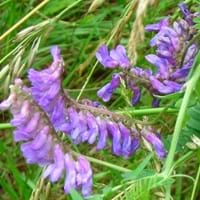Life Span
Perennial
Annual
Origin
Hybrid origin
Europe, Asia
Types
Not Available
Not Available
Habitat
Damp Places, Marshy ground
agricultural areas
USDA Hardiness Zone
6-9
3-7
Sunset Zone
2a, 2b, 3a, 3b, 4, 5, 6, 7, 8, 9, 14, 15, 16, 17, 18, 19, 20, 21, 22, 23, 24
Not Available
Habit
Clump-Forming
Prostrate/Trailing
Flower Color
Yellow, Red, Orange, Pink
Purple, Violet
Flower Color Modifier
Bicolor
Bicolor
Fruit Color
Not Available
Not Available
Leaf Color in Spring
Green, Blue Green
Green, Light Green
Leaf Color in Summer
Green, Blue Green
Green, Light Green
Leaf Color in Fall
Blue Green, Gray Green, Light Yellow
Green, Light Green
Leaf Color in Winter
Light Green
Light Green
Leaf Shape
Linear
Compound
Plant Season
Spring, Summer
Spring, Summer
Sunlight
Full Sun, Partial Sun
Full Sun, Partial Sun
Growth Rate
Medium
Very Fast
Type of Soil
Clay, Loam, Sand
Clay, Loam, Sand
The pH of Soil
Acidic, Neutral
Acidic, Neutral, Alkaline
Soil Drainage
Well drained
Average
Bloom Time
Early Summer, Summer
Late Spring, Early Summer, Summer
Tolerances
Drought
Drought
Where to Plant?
Container, Ground
Ground
How to Plant?
Divison, Seedlings
Seedlings
Plant Maintenance
Medium
Medium
Watering Requirements
Needs more water during establishment, Water Deeply, Water in morning to avoid prompting diseases, Water in the early morning hours
Average Water Needs
In Summer
Lots of watering
Lots of watering
In Spring
Moderate
Moderate
In Winter
Average Water
Average Water
Soil pH
Acidic, Neutral
Neutral
Soil Type
Clay, Loam, Sand
Well drained
Soil Drainage Capacity
Well drained
Well drained
Sun Exposure
Full Sun, Partial Sun
Partial shade
Pruning
Cut or pinch the stems, Remove damaged leaves, Remove dead branches, Remove dead leaves
Remove damaged leaves, Remove dead branches, Remove dead leaves
Fertilizers
All-Purpose Liquid Fertilizer, Apply N-P-K
All-Purpose Liquid Fertilizer
Pests and Diseases
Onion thrips, Red blotch, Root rot
Red blotch
Plant Tolerance
Drought, Moisture
Drought
Flower Petal Number
Single
Single
Foliage Texture
Coarse
Fine
Foliage Sheen
Matte
Matte
Attracts
Snails
Butterflies
Allergy
Not Available
Not Available
Aesthetic Uses
Borders, Cottage Garden, Ground Cover
Not Available
Beauty Benefits
Not Available
Not Available
Environmental Uses
Air purification
Erosion control
Medicinal Uses
Not Available
Not Available
Part of Plant Used
Not Available
Root, Stem
Other Uses
Not Available
cultivated as pasture or hay crop
Used As Indoor Plant
No
No
Used As Outdoor Plant
Yes
Yes
Garden Design
Container, Cutflower, Mixed Border, Rock Garden, Wall
Groundcover
Botanical Name
KNIPHOFIA 'Border Ballet'
VICIA villosa 'Purple Bounty'
Common Name
Tritoma, Wisley Blue Spring Starflower, Wisley Blue Springstar
Hairy Vetch, Purple Bounty Vetch
In Hindi
Tritoma
Purple Bounty Vetch
In German
Tritoma
Lila Bounty Wicke
In French
Tritoma
Violet Bounty Vetch
In Spanish
tritoma
Purple Bounty Arveja
In Greek
tritoma
Μωβ Bounty Vetch
In Portuguese
Tritoma
Roxo recompensa ervilhaca
In Polish
Tritoma
Purpurowy Bounty Wyka
In Latin
Trytoma
Bounty purpura Vetch
Phylum
Tracheophyta
Magnoliophyta
Class
Magnoliopsida
Magnoliopsida
Order
Asparagales
Fabales
Family
Liliaceae
Fabaceae
Clade
Angiosperms, Monocots
Angiosperms, Eudicots, Rosids
Tribe
Not Available
Vicieae
Subfamily
Not Available
Faboideae
Properties of Tritoma and Purple Bounty Vetch
Wondering what are the properties of Tritoma and Purple Bounty Vetch? We provide you with everything About Tritoma and Purple Bounty Vetch. Tritoma doesn't have thorns and Purple Bounty Vetch doesn't have thorns. Also Tritoma does not have fragrant flowers. Tritoma has allergic reactions like Not Available and Purple Bounty Vetch has allergic reactions like Not Available. Compare all the properties and characteristics of these two plants. Find out which of these plant can be used as indoor plant. If you are interested to decorate your house and garden, find out aesthetic uses, compare them and select the plant which will beautify your surrounding. Along with beautification, try comparing medicinal and edible uses of Tritoma and Purple Bounty Vetch and you can choose the plant having best and most benefits.
Season and Care of Tritoma and Purple Bounty Vetch
Season and care of Tritoma and Purple Bounty Vetch is important to know. While considering everything about Tritoma and Purple Bounty Vetch Care, growing season is an essential factor. Tritoma season is Spring and Summer and Purple Bounty Vetch season is Spring and Summer. The type of soil for Tritoma is Clay, Loam, Sand and for Purple Bounty Vetch is Clay, Loam, Sand while the PH of soil for Tritoma is Acidic, Neutral and for Purple Bounty Vetch is Acidic, Neutral, Alkaline.
Tritoma and Purple Bounty Vetch Physical Information
Tritoma and Purple Bounty Vetch physical information is very important for comparison. Tritoma height is 45.70 cm and width 50.80 cm whereas Purple Bounty Vetch height is 30.00 cm and width 60.00 cm. The color specification of Tritoma and Purple Bounty Vetch are as follows:
Tritoma flower color: Yellow, Red, Orange and Pink
Tritoma leaf color: Green and Blue Green
Purple Bounty Vetch flower color: Purple and Violet
- Purple Bounty Vetch leaf color: Green and Light Green
Care of Tritoma and Purple Bounty Vetch
Care of Tritoma and Purple Bounty Vetch include pruning, fertilizers, watering etc. Tritoma pruning is done Cut or pinch the stems, Remove damaged leaves, Remove dead branches and Remove dead leaves and Purple Bounty Vetch pruning is done Remove damaged leaves, Remove dead branches and Remove dead leaves. In summer Tritoma needs Lots of watering and in winter, it needs Average Water. Whereas, in summer Purple Bounty Vetch needs Lots of watering and in winter, it needs Average Water.





